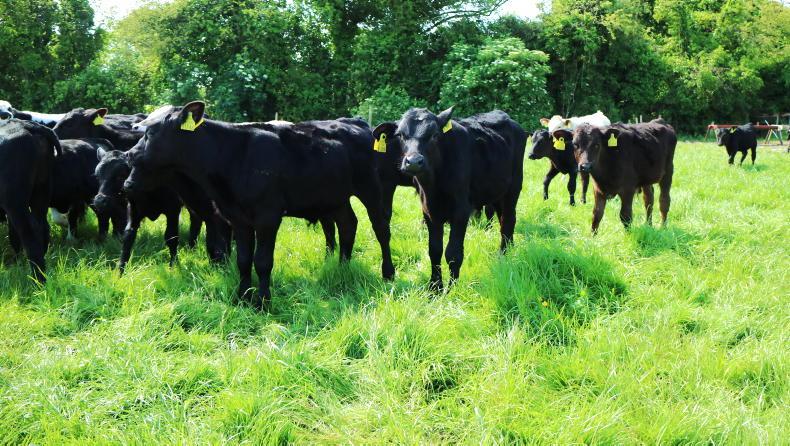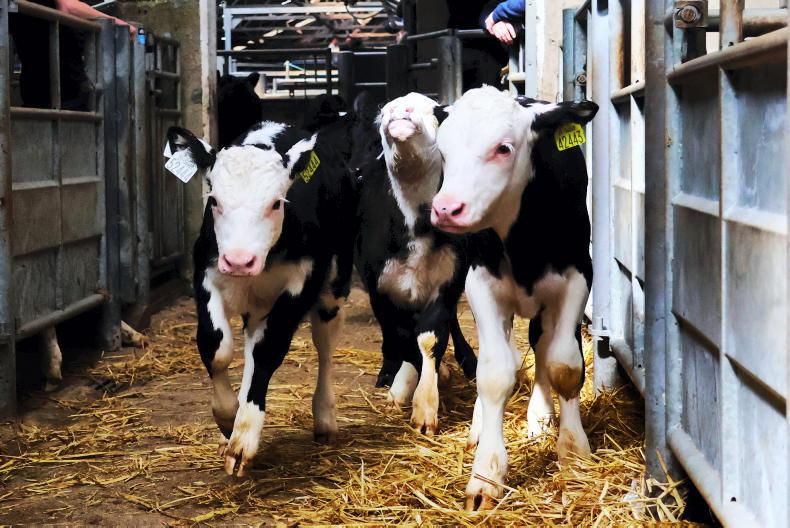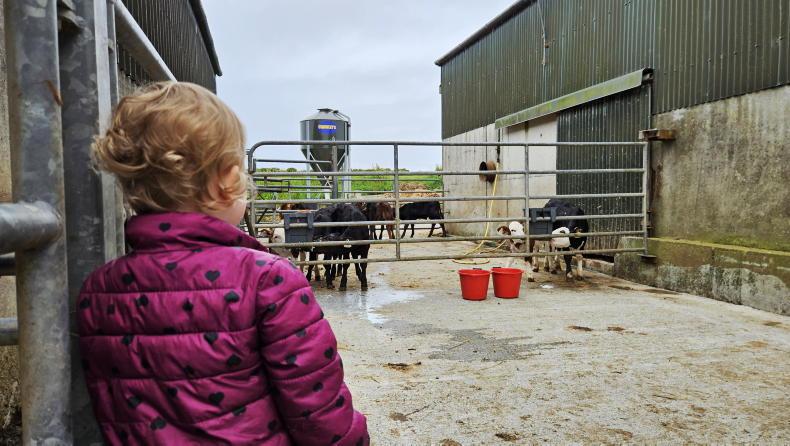For dairy-beef farmers operating a 19-month production system the key figure that you should be working towards with this year’s calves is hitting 250kg on 1 November for bullocks and 240kg for heifers.
In order to hit this target at housing time, calves should be weighing 125kg and 130kg for heifers and bullocks respectively this week.
If you weigh the batch and the average weight is on target that is great, but know that around half of the calves are below target weight.
It may make sense to split lighter calves from the group and offer them preferential treatment in terms of grazing ahead of the rest of the calves or increasing meal input for a few weeks until they are up to target.
Where you have early March- or February-born calves not hitting these numbers then you need to investigate to see what the problem is
Obviously if calves are younger, such as late-March and April born they are not going to be up to this weight at this stage.
For these calves, as long as they are doing over 0.9kg/day at this point there is little need for any further intervention – this is where regular weighing of stock pays dividends.
Where you have early March- or February-born calves not hitting these numbers then you need to investigate to see what the problem is – is there a worm burden issue? Am I managing grass properly?
Weighing calves now will flag any problems a lot earlier than leaving it until housing to find out.
Thrive farmers
Most of the Thrive programme farmers are operating a 19-month system that sees stock slaughtered in the back end of their second season at grass.
While this is not possible with all animals due to either genetics, birthdate or management issues, over 80% should be able to meet this target.
The farmers are trying to overcome these issues in a number of ways:
Genetics
The programme farmers are sourcing calves from AI sires. We are selecting suitable sires based on the Dairy Beef Index which should provide farmers with a genetically superior calf to work with.
However, the sire is only half of the story, it is important to know what kind of cow the calf is coming off as this will have a great influence on the genetic ability of the animal also.
Birthdate
As the year progresses the difference between a late-February calf and an early-April calf become all the more apparent.
These later-born calves will never meet the target liveweights along the way for a 19-month system and will require a second winter period for finishing. The programme farmers really see the benefit of being set up and ready to take calves as early in spring as possible.
Management issues
Worm control in the first season at grass is very important. Are calves coughing when they are moved from one paddock to another? If so, a lungworm dose will be required.
Dung sampling is also a great way to find out if there is a stomach worm burden within the group. Getting these treatments in on time will have a huge effect on the overall thrive of calves over the coming months.
Grass
After this, it comes down to grassland management. If all the above is done correctly and calves are not hitting live weight gain targets it means grass management needs to improve. Calves should be grazing light covers for the entire season, 8-10cm in height.









SHARING OPTIONS